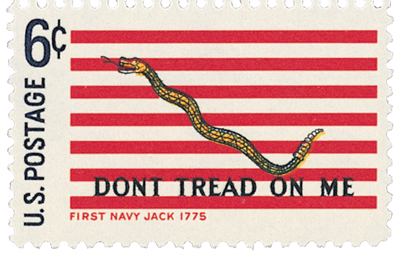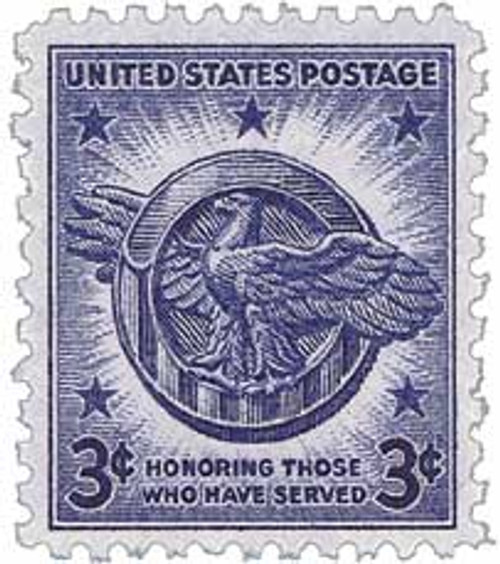
# 935 - 1945 3c US Armed Forces: Navy
3¢ U.S. Navy
Armed Forces Series
City: Annapolis, MD
Quantity: 138,863,000
Printed by: Bureau of Engraving and Printing
Printing Method: Rotary Press
Perforations: 11 x 10.5
Color: Blue
Creation Of The Continental Navy
Previously, the British had imposed martial law in Boston and Americans wanted to capture British supplies and ammunition bound for that city. Before the creation of the Continental Congress, George Washington took command of several ships to start intercepting the British vessels. At the same time, several colonial governments began preparing their own warships.
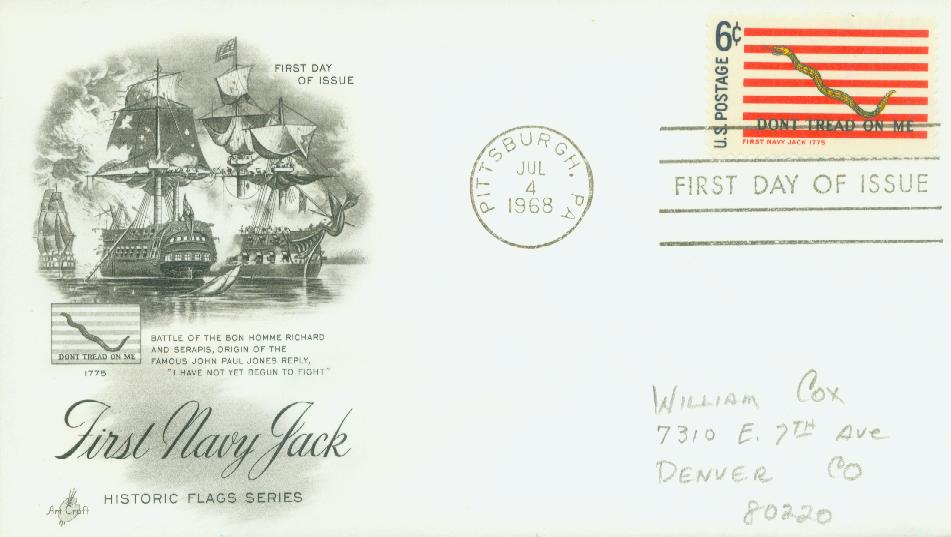
The first recorded request for a navy came on August 26, 1775, when the Rhode Island State Assembly passed a resolution asking its delegates to bring legislation before Congress requesting the “building at the Continental expense a fleet of sufficient force, for the protection of these colonies, and for employing them in such a manner and places as will most effectively annoy our enemies.” Rhode Island had a particular interest in protecting our waters because several British ships had harassed their merchants.
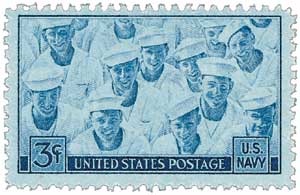
The resolution was brought before Congress on October 3 but was set aside. When they did begin to discuss the issue, several people opposed it. Among them was Samuel Chase who called it “the maddest idea in the world.” As John Adams recalled, “The opposition… was very loud and vehement. It was… represented as the most wild, visionary, mad project that had ever been imagined. It was an infant taking a mad bull by his horns.”
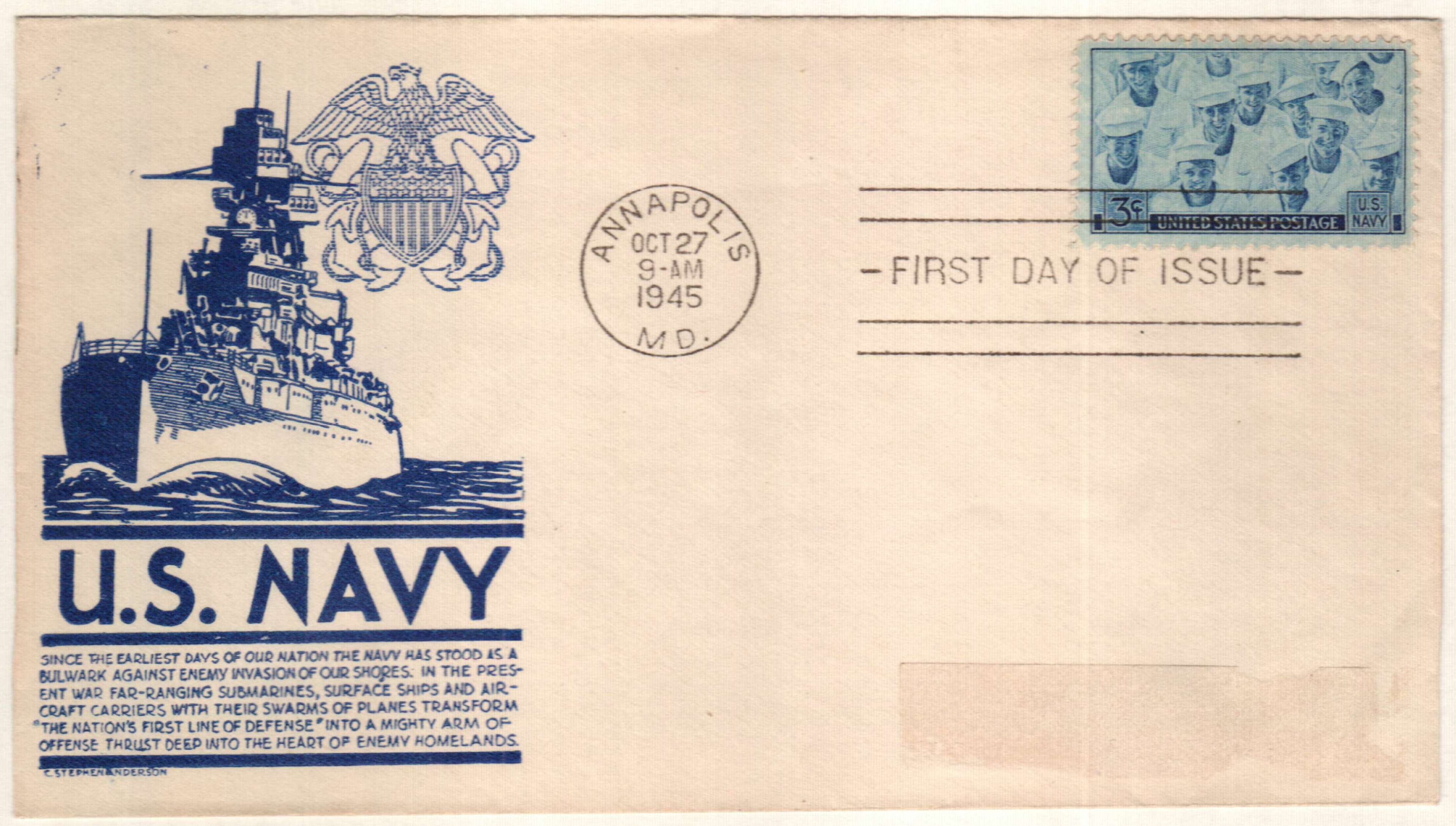
However, it was soon discovered that British supply ships were heading toward Quebec with provisions that the Continental Army desperately needed. So on October 13, Congress authorized the formation of a navy. The resolution authorized the purchase of two ships with ten guns each.
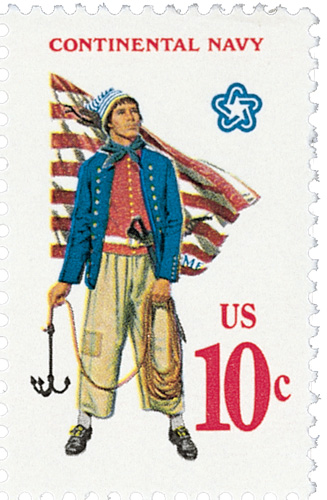
The initial purpose of the navy was to disrupt British trade and intercept military vessels carrying ammunition and reinforcements for the redcoats. By the end of the year, Congress had purchased six more ships, and thirteen warships were under construction.
As the war progressed and the size of the Continental Navy grew, its success multiplied. Its ships carried official correspondence and diplomats to Europe, returning with much-needed munitions. Almost 200 British vessels were seized, upsetting trade routes and forcing the enemy’s warships to be used for protection instead of attacking the US coastline.
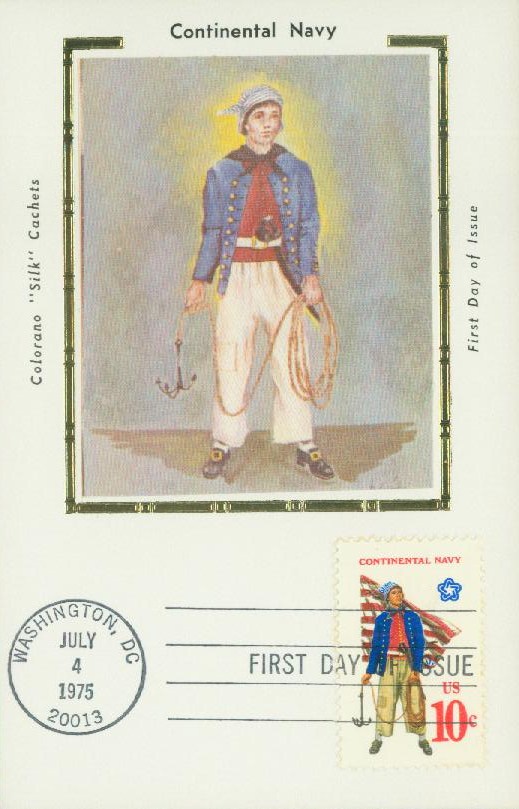
When the Revolutionary War ended, the new government was short on funds and many officials saw the navy as an unnecessary expense. The few ships that survived the war were sold off. The last one, the Alliance, had fired the final shots of the war. It was auctioned off in 1785 and the Continental Navy was disbanded.
America would be without a formal navy for the next nine years. However, after a series of run-ins near Algiers, Algeria, between American merchants and pirates, Congress finally approved the creation of a permanent navy on March 27, 1794.
3¢ U.S. Navy
Armed Forces Series
City: Annapolis, MD
Quantity: 138,863,000
Printed by: Bureau of Engraving and Printing
Printing Method: Rotary Press
Perforations: 11 x 10.5
Color: Blue
Creation Of The Continental Navy
Previously, the British had imposed martial law in Boston and Americans wanted to capture British supplies and ammunition bound for that city. Before the creation of the Continental Congress, George Washington took command of several ships to start intercepting the British vessels. At the same time, several colonial governments began preparing their own warships.

The first recorded request for a navy came on August 26, 1775, when the Rhode Island State Assembly passed a resolution asking its delegates to bring legislation before Congress requesting the “building at the Continental expense a fleet of sufficient force, for the protection of these colonies, and for employing them in such a manner and places as will most effectively annoy our enemies.” Rhode Island had a particular interest in protecting our waters because several British ships had harassed their merchants.

The resolution was brought before Congress on October 3 but was set aside. When they did begin to discuss the issue, several people opposed it. Among them was Samuel Chase who called it “the maddest idea in the world.” As John Adams recalled, “The opposition… was very loud and vehement. It was… represented as the most wild, visionary, mad project that had ever been imagined. It was an infant taking a mad bull by his horns.”

However, it was soon discovered that British supply ships were heading toward Quebec with provisions that the Continental Army desperately needed. So on October 13, Congress authorized the formation of a navy. The resolution authorized the purchase of two ships with ten guns each.

The initial purpose of the navy was to disrupt British trade and intercept military vessels carrying ammunition and reinforcements for the redcoats. By the end of the year, Congress had purchased six more ships, and thirteen warships were under construction.
As the war progressed and the size of the Continental Navy grew, its success multiplied. Its ships carried official correspondence and diplomats to Europe, returning with much-needed munitions. Almost 200 British vessels were seized, upsetting trade routes and forcing the enemy’s warships to be used for protection instead of attacking the US coastline.

When the Revolutionary War ended, the new government was short on funds and many officials saw the navy as an unnecessary expense. The few ships that survived the war were sold off. The last one, the Alliance, had fired the final shots of the war. It was auctioned off in 1785 and the Continental Navy was disbanded.
America would be without a formal navy for the next nine years. However, after a series of run-ins near Algiers, Algeria, between American merchants and pirates, Congress finally approved the creation of a permanent navy on March 27, 1794.








